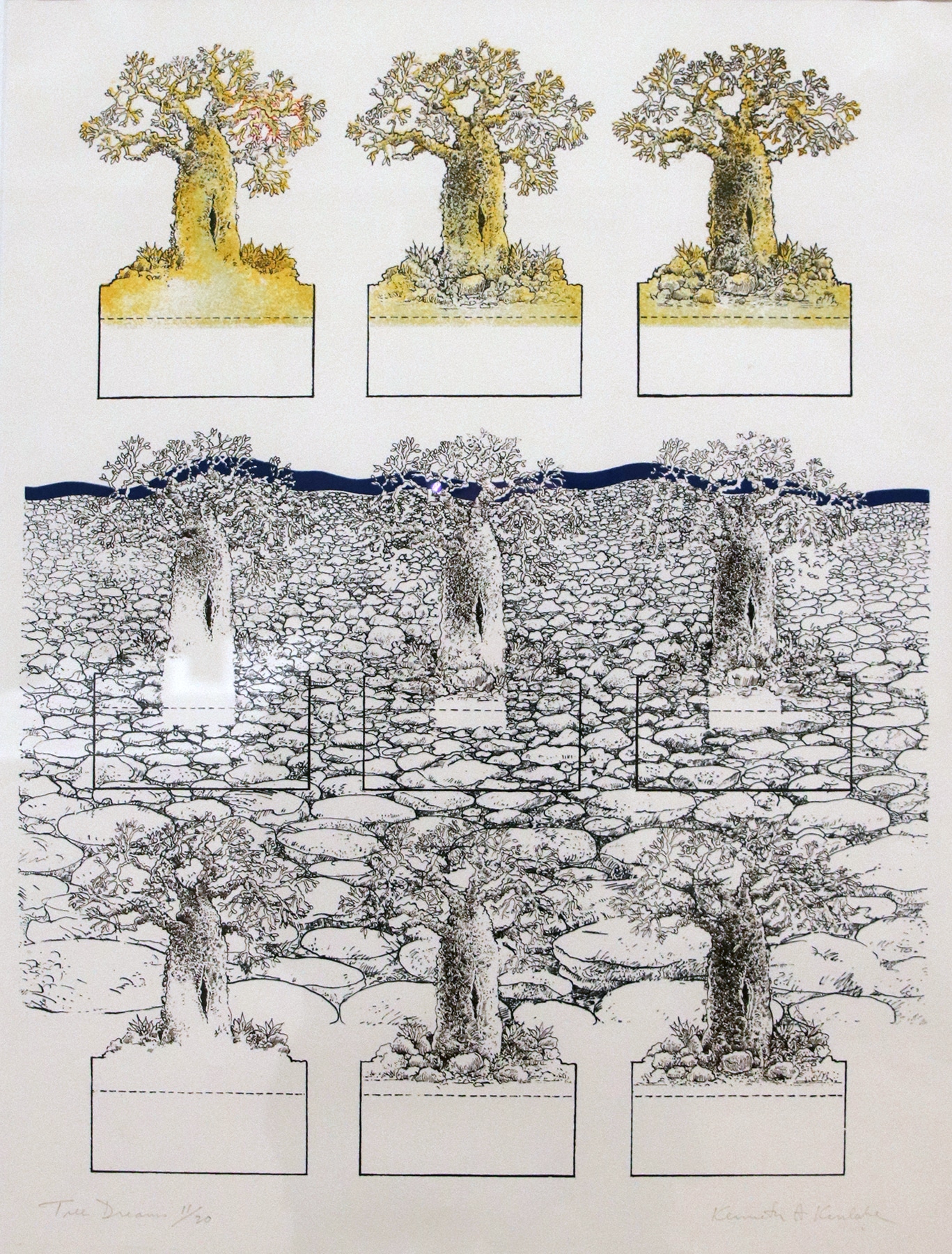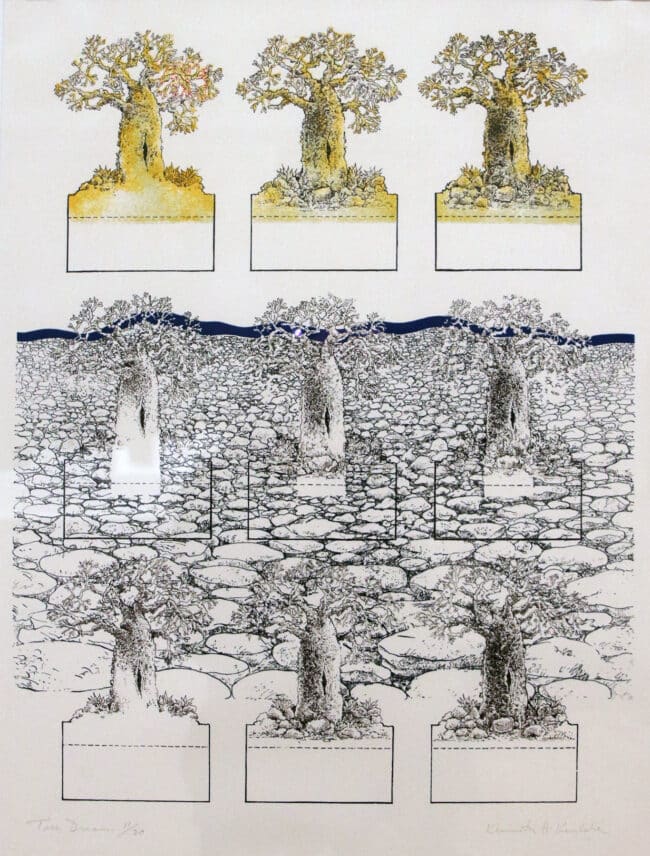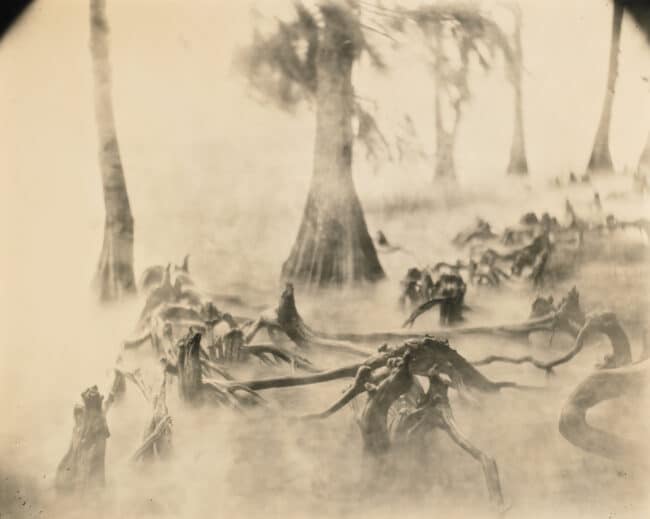Plants accompany every aspect of human life. We breathe in the oxygen they breathe out, we eat them (or we eat animals that eat them), we wear them, we make our dwellings and furnishings from them, we kill them when they are inconvenient to us. Eighty percent of the Earth’s biomass is composed of living plant material; living human bodies make up less than two-tenths of one percent. Ironically, the incomprehensible abundance of plants may explain our propensity to “plant blindness,” a term coined in 1998 by botanists James H. Wandersee and Elisabeth E. Schussler to describe modern humans’ casual inattention to plants’ foundational roles in the biosphere and their influences on human culture.
Each of the 12 works featured in Plant Life were chosen because something in it provokes critical reflection on the strange entanglements of humans and plants. In these works, plants are more than props: they are—openly or cryptically—also made present to us in their own way. They show that it is possible to see our photosynthetic kin as they really exist, in this exhibition, throughout the museum, and in the world outside: as vitally, expressively, insistently with us.
Curated by Terry Harpold, Associate Professor of English, University of Florida, and the graduate students enrolled in his Spring 2021 seminar Critical Plant Studies: Ryan Bedsaul, Anwesha Chattopadhyay, Anna Grzybowska, Jacob Hawk, Olivia Ivings, Kevin McKenna, Elizabeth Nichols, Erick Verran, Peter Vertacnik, and Janice Whang.
This is exhibition is supported by The Dr. Madelyn M. Lockhart Endowment for Focus Exhibitions, which supports creative collaborations between UF faculty and the Harn Museum of Art.





